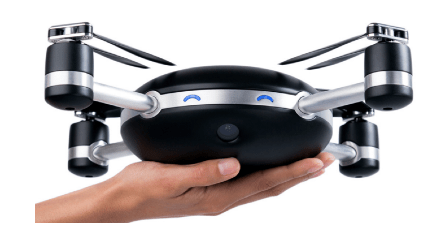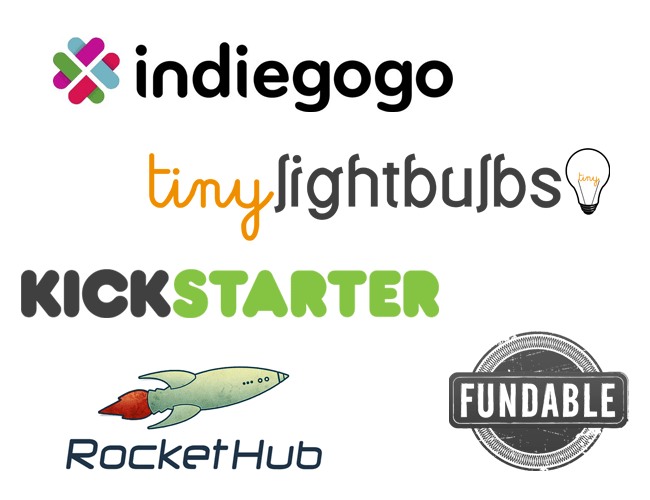It’s becoming a familiar news story in the drone industry: ‘Successful Crowdfunding Campaign Ends in Disappointment.’ You’ve probably heard about one that fits the description. And it always seems to unfold the same way. First, the startup in question will raise a huge amount of publicity and cash on the back of an innovative vision. It’s marketed well, big promises are made, the flames of expectation are fanned. Then, maybe a few months go by. There are delays. Maybe a year or two down the line the end comes abruptly. Things haven’t worked out. Sorry about that.
This is the recognisable pattern that many drone crowdfunders are sadly following, from the record-breaking failure of the Zano to the Robot Dragonfly and the Pocket Drone. More recently we’ve seen the collapse of the high-profile Lily drone, which, although funded from pre-orders and not on a conventional platform, has much in common with other failed projects. So what can the drone industry learn from the crowdfunding failures of the past? How can buyers choose the right company to back? And what needs to change to restore faith in consumer drone startups keen to raise money online?
Our view of crowdfunding platforms has to change
Crowdfunding platforms are not a completely original concept. Venture capitalism has been around for a long time, so has the idea that with investment comes an element of risk. The only difference with Kickstarter, IndieGoGo and the like are that the door is open for anybody to pitch and pledge. The lack of a decent vetting process means that marketing often takes priority over substance and realism.

The vast majority of drone startups searching for money via crowdfunding platforms are genuine. It’s not a con. These are real people with real ideas. Backers just have to accept that they are throwing money at someone else’s vision, that there are no guarantees and that anything can happen. Most importantly of all, backers have to accept that the team or individual they are fronting may not have what it takes to turn this concept into reality. This is especially the case in the complex world of aviation.
It’s also high time that backers learned more about the mechanics of online crowdfunding platforms. While Kickstarter and Indiegogo may seem like altruistic places, they are businesses like any other, and out there to make money. On average they take a 5% cut of every successfully funded campaign.
So what can backers do? For starters, maybe it would be best to only put funding into projects that have concrete proof of their concept already – Such as the successful Aerial Atom racing drone, which raised 200% of its goal last year. In an industry where even the biggest names (see GoPro) can run into technical challenges, backers would do well to put their money behind startups that can point to something more concrete than a vision.
Drone startups need to be more responsible
Having said that, there’s no doubt that some of the high-profile failures in the world of drone crowdfunding have only had themselves to blame. Exaggerated marketing campaigns – some that would make GoPro’s look conservative – are luring in backers new to the industry with misleading claims. The reputation of all drone startups is being tarnished as a result.
https://www.youtube.com/watch?v=q6UYFpdIDXc
What’s needed is a touch more honesty and realism from startups pitching for funding. Sure, have big ambitions, but don’t promise more than you can ever hope to achieve – exactly what happened with Zano, which raised millions of dollars on Kickstarter (above).
If it looks too good to be true, it probably is
Part of what’s great about crowdfunding platforms is the risk. You don’t know what the end product will be like and you get an inside look at the journey of whichever startup you back. But that doesn’t completely excuse the naivety of backers. People need to understand that most crowdfunding platforms are essentially unregulated, and that false promises can and will happen. A bit of research into what and what isn’t realistic in the drone industry should take place before any money changes hands.

There is also a lack of accountability here. Startups are under no obligation to deliver on their promises, and it’s to the credit of Lily and the recently shut down Rook that refunds are being offered to backers.
Big failures are giving startups a bad name
There’s no doubt that high-profile failures give startups in the industry a bad name. Maybe a healthy dose of scepticism is what’s needed on behalf of potential backers.
It’s interesting is that there seems to be a relationship between over funding and failure. Some startups that set out to raise around $20,000 have smashed their targets by 100% or even 1000%, taking on far more than they can handle.
Although clearly not in the interests of the platforms that generate revenue from successful campaigns, perhaps there needs to be an upper limit on how much small teams of people are able to raise. Huge amounts of pre-orders, a lack of industry experience and a seemingly endless pile of cash is usually a recipe for disaster.
Media too quick to jump on bandwagons
At Dronelife we try to bring you news of the latest crowdfunding campaigns with a pinch of realism. Most of our readers will be able to tell quite quickly if a drone project is realistic or not and whether backing it represents value for money. Just look at a new, indestructible racing drone that we featured last week. However, many mainstream media publications are quick to jump on bandwagons before there’s been any kind of substance from the campaign.

Let’s not forget the hype that has surrounded the Lily drone since its inception. Despite it being nothing more than a concept, it gained a huge amount of media attention. Back in the day, Kickstarter chose Zano as a featured project, Engadget shortlisted it for the CES 2015 award without it having flown at the event. Popular Science chose it as one of its 100 most amazing innovations of 2015. All this attention without it ever even taking flight – why?
Crowdfunding platforms don’t help themselves

After the high-profile failure of the Zano back in 2015, Kickstarter commissioned a report to find out where it had all gone wrong. These platforms are making huge sums of money by connecting backers and dreamers, and more transparency like this is needed. Unfortunately, as long as crowdfunding platforms prioritize profit over innovation (which will always be the case), this is unlikely to change. The current model will continue to encourage startups to make bold claims and exaggerate outcomes in the hope of generating more funds.
So what can we take from the failures of crowdfunded drone projects?
- A tougher vetting process for startups is needed, especially with regards to capacity and capability.
- Crowdunding platforms need to make campaigns more accountable and realistic.
- Backers need to be better educated on the risks involved.
- There’s a gap in the market for a more ethical crowdfunding platform that provides a place for startups to raise money without encouraging them to exaggerate potential.
- Platforms should consider having an upper limit on campaign goals, avoiding the potential for exciting ideas to be overwhelmed with expectation and pre-orders.
Have you had an experience of crowdfunding in the drone industry? – good or bad, let us know below.
Malek Murison is a freelance writer and editor with a passion for tech trends and innovation. He handles product reviews, major releases and keeps an eye on the enthusiast market for DroneLife.
Email Malek
Twitter:@malekmurison
Subscribe to DroneLife here.







how would you buy a product from a crowd funder, if its not on the market or in stores why buy the product, we should not be financing their production, they should get their own finance